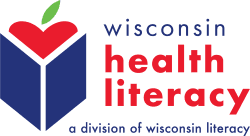Medication Label Initiative Phase 2: Pilot Implementation of New Prescription Medication Label Standards in Wisconsin
In Wisconsin, 68.8 million prescriptions were filled in 2014, and over 50% of the 4 million adults ages 21 to 74 took at least one prescription monthly. Misunderstanding and incorrect medication use is linked to non-adherence, which has been associated with a 20% greater risk of hospital readmission. Of adults, 75% can’t fully identify a prescription’s reason for use, and, therefore, often do not use medication as prescribed. Seniors, who use the most medications, have a significantly greater risk of misunderstanding labels leading to allergic reactions, falls, and even death.
Project Background:
This project focused on systems change: successful implementation of new labels in 64 pilot pharmacies are now a catalyst for broader statewide change. While voluntary, the anticipated health benefits, patient satisfaction and medication adherence in the pilot pharmacies will position the change as imperative for others.
Funding is provided by the Advancing a Healthier Wisconsin Endowment of the Medical College of Wisconsin.
Project Partners:
WHL, a division of Wisconsin Literacy, Inc. led the project in conjunction with Medical College of Wisconsin academic partner Kenneth D. Schellhase, MD, MA, MPH, Professor, Family and Community Medicine. Additional collaboration was offered by the pilot pharmacies: Hayat Pharmacy, Hometown Pharmacy, UW Health Pharmacies, Forward Pharmacy and Fitchburg Family Pharmacy, as well as the Pharmacy Society of Wisconsin, the UW Patient and Community Engagement Center, UW School of Pharmacy, and others.
Project Activities:
- Adopted new labels based United States Pharmacopeia guidelines at 67 pharmacies in 5 pharmacy systems.
- These pharmacies combined dispense over 1.8 million prescriptions per year.
- Increased awareness of new labels through communication and outreach activities.
- Held Prescription Medication Labeling Summit in April 2017.
- Formed Stakeholder input:
- Project Advisory Council: this group met quarterly to provide advice and recommendations to advance the project.
- Patient Advisory Group: A purposeful and diverse sample of participants was recruited to meet quarterly to review materials and project activities to ensure they were clear and understandable by patients of all literacy levels.
- Evaluation of Medication Adherence: In this project, the average medication possession ratio (MPR) had significantly improved after the label change in three commonly prescribed medicine categories.
For detailed information about this project, including further evaluation results, download the following article published in the Pharmacy Society of Wisconsin Journal: Adopting Patient-Centered Prescription Medication Labels in Wisconsin.

